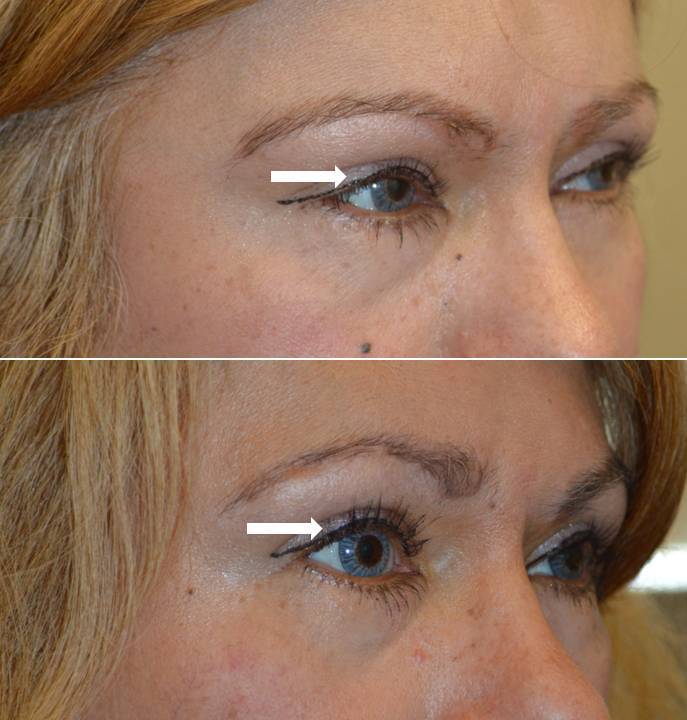

The silicon strand is more elastic than the fibrous tissue used in children, making it easier to close your eyelids after the procedure. In most adults, a frontalis suspension is performed with an elastic strand of solid silicon. This usually produces a long-lasting correction, although adjustments later in life are often necessary. In children, a frontalis suspension is performed with fibrous tissue taken from the leg, either your child’s own leg or a donor.

When you want to close your eyelids you will unconsciously lower your brows and squeeze your eyelids shut. When you wish to raise your eyelid you will unconsciously raise your brows.

These strands are tightened in order to raise the lid. During a frontalis suspension, small strands are placed between the eyelid and eyebrow. In that case a frontalis suspension is necessary. If the levator muscle is very weak, tightening the muscle will not adequately raise the lid. With time you should be able to close your eye normally. At first, you will need to frequently lubricate your eye with ointment and/or drops in order to keep the eye from drying out. When the muscle is first tightened you will not blink normally. If some muscular function remains in the levator muscle, muscular ptosis is corrected by actually tightening the levator muscle (levator resection). In some cases, muscular ptosis is associated with other muscular or neurologic problems. Muscular ptosis can also be acquired later in life as the muscle weakens. Mild ptosis in childhood can worsen as the person ages, requiring surgical repair in young adulthood. If the ptosis is not that severe, ptosis repair is usually delayed until the child is more cooperative, between 4 and 6 years of age. In some cases the ptosis will actually keep a child from walking well because the child must lift the chin in order to see. If the ptosis affects the child’s vision, early correction is necessary. Ptosis which occurs in early childhood is usually due to a weak levator muscle. Muscular ptosis can occur in early childhood or adulthood. The function of the levator muscle is to raise the eyelid. Muscular – In some people ptosis is actually caused by a weak levator muscle. Ptosis repair is performed through an incision in the normal crease in the upper lid.Īfter upper lid ptosis repair and blepharoplasty Involutional ptosis is corrected by tightening the levator muscle. In addition, long-term rigid contact lens wear may weaken the tissue of the upper lid. Involutional ptosis usually occurs with aging. Involutional – In most people, ptosis is caused by the gradual stretching of the tissue which supports the upper lid. Special training is also required in order to ensure the proper lubrication of the eye after surgery. Care is needed in planning and performing the surgery. Ptosis repair requires extensive experience. Ptosis repair is usually performed by an ophthalmologist who specializes in eyelid surgery.
#Droppy eyelid surgery skin#
Some patients with ptosis also have excess skin and fat in the upper lid, which can be corrected at the time of ptosis repair. Repair is intended to provide a more youthful, vibrant appearance as well as to improve your sight. Ptosis causes a tired, sleepy appearance and reduces vision. Ptosis is defined as drooping of the upper lid, partly covering the pupil. Oculoplastic & Cosmetic Surgery Education.


 0 kommentar(er)
0 kommentar(er)
